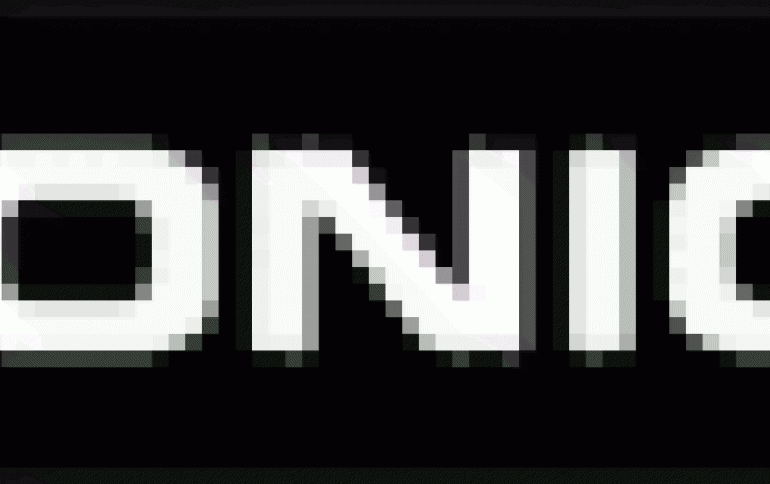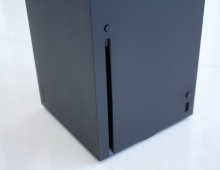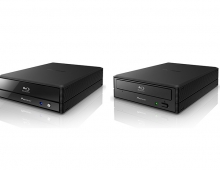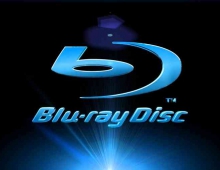
Sonic Delivers New Production Tools to High Definition Authoring Alliance
Sonic Solutions released significant enhancements to its production toolset for new high-definition video disc formats.
The releases mark the completion of Phase 2 of Sonic's development of encoding and authoring solutions that allow members of the High Definition Authoring Alliance (HDAA), a Sonic-sponsored association of the world's top disc authoring facilities, to prepare now for the upcoming rollouts of both HD DVD and Blu-ray Disc (BD). Covering the entire spectrum of components required for full-service HD disc creation, the tools are being released from mid-August through late September and are showing now in the Sonic booth (#7.731) at IBC.
The Phase 2 feature enhancements include:
- Video and audio encoding -- the Sonic HD-series Encoder now supports additional codecs and features StreamData technology that enables integration with Sonic HD authoring applications via the exchange of key encoding metadata.
- HD DVD Standard Content authoring -- Scenarist HD now supports additional audio stream types (Dolby Digital Plus and Dolby TrueHD), and disc image formatting and output.
- BD authoring -- Blu-ray Creator supports High Definition Movie Mode (HDMV), additional stream types including MPEG-2 HD and LPCM, subtitle creation, support for pop-up menus and overlay controls, and disc image formatting.
- Advanced interactivity -- HD DVD advanced interactivity code compilations support advanced subtitles, synchronized content (e.g., storyboards and scripts), and the world's first Advanced Content in-stream multiplexing solution, as well as iHD emulation; BD-J advanced interactivity code compilations allow buttons to be overlaid on video for seamless, contextually-integrated menus.
The "HDMV" mode
The "HDMV" authoring mode is part of the Blu-Ray disc specifications and offers all features of DVD-Video and more. It is designed to offer new features, while keeping authoring process as simple as possible. It streamlines the production of both Blu-ray Disc as well as DVD-Video titles, as the production process incorporates many identical phases. However, it offers improved navigational and menu features, improved graphics and animation, improved subtitling support and new features like browsable slideshows.
The "BD-J" mode
The "BD-J" authoring mode is also inluded in the Blu-Ray specifications and was designed to offer the content provider increased functionality when creating interactive titles. It is based on Java 2 Micro Edition, so programmers are able to quickly be familiar with the programming environment for BD-J. Every Blu-ray Disc player will be equipped with a Java interpreter, so that it is capable of running discs authored in BD-J mode.
The BD-J mode gives the author complete freedom in designing the user interface. The interface is controllable by user using standard navigational buttons on remote. It can display up to 32bit dynamically generated graphics (millions of colors), and it supports the display of pictures in standard file formats like JPEG, PNG, etc.
The BD-J application can also act as the sole interface to the disc's contents (thus replacing the players on-screen controls as with discs authored in HDMV mode). The BD-J environment offers all of the playback features of HDMV mode, including the selection of subtitle, trick play modes, angles, etc. Video can even be scaled dynamically, so that it can be played in a small size in the corner of a menu, and resume full screen when a selection is made.
Last, the BD-J system supports basic Internet protocols like TCP/IP and HTTP. The player may connect to the disc publisher's web site to unlock certain content on the disc, or dynamically display certain info (like theater playing schedules for a movie) on the screen. The disc's program may be extended with JPEG pictures or audio fragments downloaded from the Internet, or it can even stream full new audio/visual content to Local Storage.
Sonic showcased playback of a BD-J-authrored video at IBC. The demonstration's movie-centric navigation combined video playback with graphic overlays offering instant menu access to chapters, system settings, and special features such as synchronized annotations. The presentation also showed how content such as trailers may be kept fresh and relevant via Internet updating.
The Phase 2 feature enhancements include:
- Video and audio encoding -- the Sonic HD-series Encoder now supports additional codecs and features StreamData technology that enables integration with Sonic HD authoring applications via the exchange of key encoding metadata.
- HD DVD Standard Content authoring -- Scenarist HD now supports additional audio stream types (Dolby Digital Plus and Dolby TrueHD), and disc image formatting and output.
- BD authoring -- Blu-ray Creator supports High Definition Movie Mode (HDMV), additional stream types including MPEG-2 HD and LPCM, subtitle creation, support for pop-up menus and overlay controls, and disc image formatting.
- Advanced interactivity -- HD DVD advanced interactivity code compilations support advanced subtitles, synchronized content (e.g., storyboards and scripts), and the world's first Advanced Content in-stream multiplexing solution, as well as iHD emulation; BD-J advanced interactivity code compilations allow buttons to be overlaid on video for seamless, contextually-integrated menus.
The "HDMV" mode
The "HDMV" authoring mode is part of the Blu-Ray disc specifications and offers all features of DVD-Video and more. It is designed to offer new features, while keeping authoring process as simple as possible. It streamlines the production of both Blu-ray Disc as well as DVD-Video titles, as the production process incorporates many identical phases. However, it offers improved navigational and menu features, improved graphics and animation, improved subtitling support and new features like browsable slideshows.
The "BD-J" mode
The "BD-J" authoring mode is also inluded in the Blu-Ray specifications and was designed to offer the content provider increased functionality when creating interactive titles. It is based on Java 2 Micro Edition, so programmers are able to quickly be familiar with the programming environment for BD-J. Every Blu-ray Disc player will be equipped with a Java interpreter, so that it is capable of running discs authored in BD-J mode.
The BD-J mode gives the author complete freedom in designing the user interface. The interface is controllable by user using standard navigational buttons on remote. It can display up to 32bit dynamically generated graphics (millions of colors), and it supports the display of pictures in standard file formats like JPEG, PNG, etc.
The BD-J application can also act as the sole interface to the disc's contents (thus replacing the players on-screen controls as with discs authored in HDMV mode). The BD-J environment offers all of the playback features of HDMV mode, including the selection of subtitle, trick play modes, angles, etc. Video can even be scaled dynamically, so that it can be played in a small size in the corner of a menu, and resume full screen when a selection is made.
Last, the BD-J system supports basic Internet protocols like TCP/IP and HTTP. The player may connect to the disc publisher's web site to unlock certain content on the disc, or dynamically display certain info (like theater playing schedules for a movie) on the screen. The disc's program may be extended with JPEG pictures or audio fragments downloaded from the Internet, or it can even stream full new audio/visual content to Local Storage.
Sonic showcased playback of a BD-J-authrored video at IBC. The demonstration's movie-centric navigation combined video playback with graphic overlays offering instant menu access to chapters, system settings, and special features such as synchronized annotations. The presentation also showed how content such as trailers may be kept fresh and relevant via Internet updating.





















